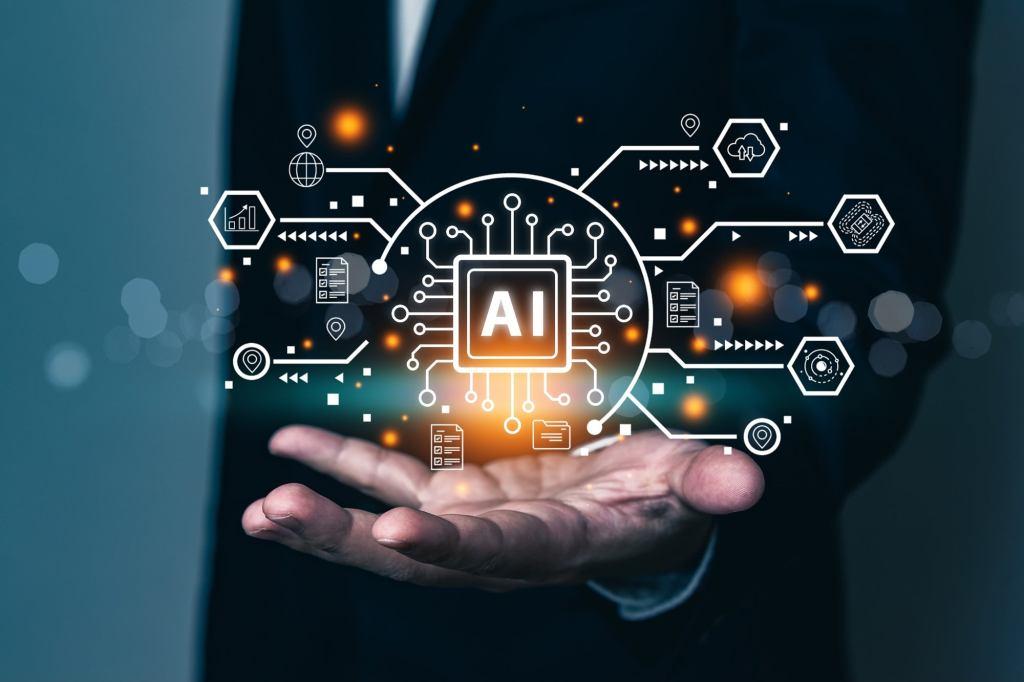The Urgent Call to Break Up Big AI: Challenging Tech Giants' Monopoly
2 Sources
2 Sources
[1]
We Need to Break Up Big AI Before It Breaks Us
Amazon, Microsoft, and Google own two-thirds of cloud computing, where chips are used and where AI models are built. Each of these three so-called hyperscalers are among the top five most valuable companies in the world. At its core, the cloud is a model analogous to electricity, water, and other utilities; computing is a commodified service, generated at a remote location (in this case, a data center) and delivered through a network (here, the internet). Unlike other utilities, however, hyperscalers are unregulated, allowing them to pick winners and losers among their customers. For most developers, that means lock-in and dependency, which became normal before today's AI boom and is assumed. At first, OpenAI and Anthropic seemed like they were ready to challenge Big Tech. Instead, they fused with the silicon giants. What once looked like healthy competition has become a carousel of Big Tech ownership, with upstarts absorbed before they can become real rivals. OpenAI's biggest investors are Microsoft and now Nvidia. Anthropic's biggest owners include Amazon and Google. Each has also acquired or invested in countless AI startups. Tech companies often dub these dealings "partnerships," but regulators shouldn't. These are clear moves for cross-ownership, industry consolidation, and sectoral domination. It's the same strategy Big Tech has used for decades: Facebook bought Instagram to kill competition. Google bought DoubleClick to dominate ads. Amazon used its marketplace data to copy and undercut sellers. Microsoft pioneered this action in the 1990s by crushing Netscape to protect Internet Explorer. Apple used its App Store to tax rivals. The AI playbook is no different, and it's literally the same companies that have already used these tactics to great success.
[2]
Why We Must Break Big Tech's Stranglehold on Machine Intelligence
The solution lies in three emerging approaches: open-source chip development, distributed computing networks and tokenized AI ecosystems that reward contributors directly. Behind every ChatGPT response and Midjourney image lies an uncomfortable truth: Four corporations now control the physical and intellectual infrastructure of artificial intelligence. Add to that, NVIDIA's 92% monopoly on AI chips, combined with the cloud dominance of Amazon, Google and Microsoft. As economist Mariana Mazzucato observes, we are moving toward an age of "digital feudalism," where public risk and knowledge are preceded by private extraction, concentrating control over AI's means of production. The raw economics reveal why this matters. Training cutting-edge AI models now costs between £60-150 million per run -- a figure projected to exceed £800 million by 2027. These aren't just development costs; they're admission tickets to the AI arms race, priced to exclude all but tech giants and nation-states. A leading AI infrastructure figure admitted that his startup directs most of its capital to NVIDIA GPUs and cloud services like AWS, which underscores that compute costs dominate budget allocation and reinforces dependency on a few major providers. Related: Open Source AI and Blockchain Will Define Global Dominance in the Future Recent concerns about AI's "garbage in, garbage out" problem rightly highlight data quality issues. Blockchain-based verification systems -- like those tracking data provenance in healthcare AI, are crucial for building trustworthy systems. However, they address only half the crisis. Consider this paradox: Even if we achieve perfect data transparency through decentralized verification, it means little when: Although Anthropic bills Claude as "open" and Meta markets Llama as "open-source," in practice, both reinforce centralization. They rely on the same locked-down chip and cloud infrastructure, and their licensing terms restrict real access. Critics have likened this to an "illusion of choice" inside a walled garden, where openness becomes a strategic veneer, not real decentralization. True alternatives require reinventing AI's physical backbone. Three disruptive approaches are emerging: 1. Hardware liberation: Startups like Rivos and AheadComputing are pioneering open-source chip development using the RISC‑V instruction set. Their aim is to dramatically reduce chip design cost, from billions to mere millions -- mirroring how Linux disrupted proprietary UNIX systems. Academic efforts such as Croc (ETH Zurich) also demonstrate how RISC‑V-based systems can support edge AI, helping decentralize silicon development away from NVIDIA and ARM monopolies. 2. Compute commons: The DePIN sector, led by projects like Akash Network and Render, is proving that distributed computers can scale. Akash now offers up to 90% cost savings compared to traditional cloud platforms like AWS and Azure, and its Supercloud has delivered tens of millions of GPU memory-hours. Real-world case studies show startups reducing infrastructure costs by over 50%. These networks challenge cloud monopolies by making computer access permissionless, scalable and geographically distributed. 3. Protocol-owned AI: Decentralized protocols like Bittensor are building tokenized ecosystems for machine intelligence. Rather than routing value upward to centralized AI labs, Bittensor pays contributors whether they supply computers, models or training in its native $TAO token. The project has reached a multi-billion-dollar market cap, signaling appetite for alternative AI governance models. Similarly, there are other projects that create tokenized data marketplaces where users maintain control over their data and earn fair compensation for sharing it, all while ensuring transparency and provenance. This isn't merely technical infrastructure -- it's democratic infrastructure. When AI systems influence everything, from medical diagnoses to judicial decisions, their architecture becomes political: The EU's Digital Markets Act has begun recognizing this, requiring interoperability for "gatekeeper" platforms. But we need bolder policies that fund public AI compute clusters, support open-chip manufacturing initiatives and treat AI infrastructure as essential public goods. Related: Moving Towards Decentralization The AI revolution presents a stark choice: Will we accept corporate-controlled intelligence as inevitable, or build alternatives that distribute power as radically as the technology itself? This goes beyond fixing data quality -- though that remains crucial. It requires reinventing every layer of the stack, from silicon to software, through: The companies controlling AI today didn't invent neural networks. They privatized public research while building moats around implementation. Now, decentralized technologies offer tools to reclaim AI's infrastructure for collective benefit. As we face down what may become history's most consequential monopoly, one truth becomes clear: In the age of machine intelligence, infrastructure isn't just about what works. It's about who governs.
Share
Share
Copy Link
As AI rapidly advances, concerns grow over the concentration of power in the hands of a few tech giants. Critics argue for urgent action to break up 'Big AI' to protect innovation, competition, and democratic values.
The Growing Concern Over Big Tech's AI Monopoly
In recent months, the rapid advancement of artificial intelligence (AI) has sparked a heated debate about the concentration of power in the hands of a few tech giants. Critics argue that this monopolization threatens innovation, competition, and democratic values, calling for urgent action to break up "Big AI" before it's too late.
The Current Landscape of AI Dominance
The AI industry is currently dominated by a small group of tech behemoths. Amazon, Microsoft, and Google control two-thirds of the cloud computing market, which is crucial for AI model development
1
. NVIDIA holds a staggering 92% monopoly on AI chips, further consolidating the physical infrastructure of AI2
.
Source: Entrepreneur
This concentration of power is not limited to hardware. Recent "partnerships" between established tech giants and AI startups have raised eyebrows. OpenAI, once seen as a potential challenger to Big Tech, now counts Microsoft and NVIDIA among its biggest investors. Similarly, Anthropic has received significant investments from Amazon and Google
1
.The Economic Barriers to Entry
The economics of AI development present a significant barrier to entry for newcomers. Training cutting-edge AI models can cost between £60-150 million per run, with projections suggesting this could exceed £800 million by 2027
2
. These astronomical costs effectively limit participation in the AI arms race to tech giants and nation-states.The Illusion of Openness
While some companies market their AI models as "open" or "open-source," critics argue that this is merely a strategic veneer. Models like Anthropic's Claude and Meta's Llama still rely on centralized chip and cloud infrastructure, with licensing terms that restrict real access
2
.Related Stories
Emerging Solutions to Break the Monopoly
To challenge the status quo, three disruptive approaches are gaining traction:
-
Open-source chip development: Companies like Rivos and AheadComputing are working on dramatically reducing chip design costs using the RISC-V instruction set
2
. -
Distributed computing networks: Projects like Akash Network and Render are proving that distributed computers can scale, offering significant cost savings compared to traditional cloud platforms
2
. -
Tokenized AI ecosystems: Decentralized protocols such as Bittensor are building systems that reward contributors directly, challenging the centralized value capture of traditional AI labs
2
.
The Need for Policy Intervention
Experts argue that breaking up Big AI is not just a technical challenge but a political necessity. As AI systems increasingly influence critical decisions in healthcare, law, and beyond, the architecture of these systems becomes a matter of public interest. While the EU's Digital Markets Act has begun to address some of these concerns, many call for bolder policies that treat AI infrastructure as essential public goods
2
.As the AI revolution unfolds, society faces a crucial choice: accept corporate-controlled intelligence as inevitable or build alternatives that distribute power more equitably. The outcome of this debate will likely shape the future of technology and its impact on democracy for generations to come.
References
Summarized by
Navi
Related Stories
The Shifting Landscape of AI Regulation: From Calls for Oversight to Fears of Overregulation
27 May 2025•Science and Research

The Rise of Payable AI: Addressing Data Attribution and Fairness in Artificial Intelligence
04 Jul 2025•Technology

Open-Source AI Models Gain Momentum, Challenging Industry Giants
26 Jul 2024

Recent Highlights
1
AI Chatbots Sway Voters More Effectively Than Traditional Political Ads, New Studies Reveal
Science and Research

2
OpenAI declares code red as Google's Gemini 3 gains 200 million users in three months
Technology

3
Trump approves Nvidia H200 chip exports to China with 25% revenue cut, defying Senate concerns
Policy and Regulation





